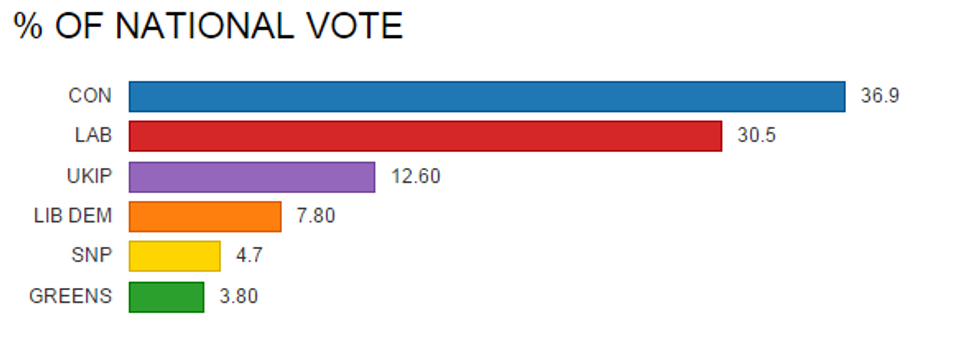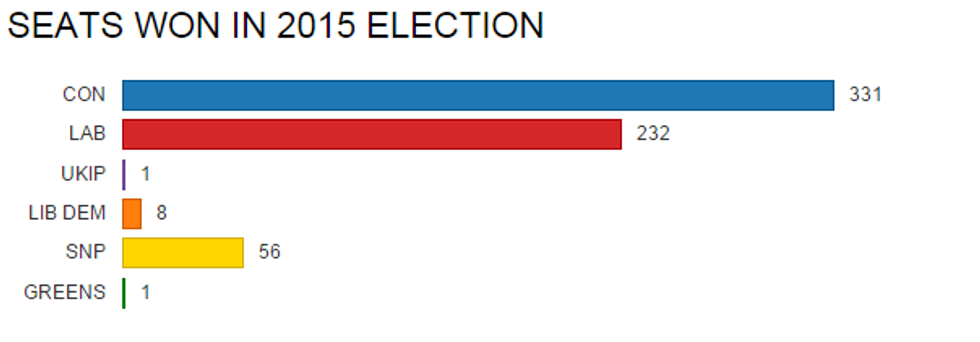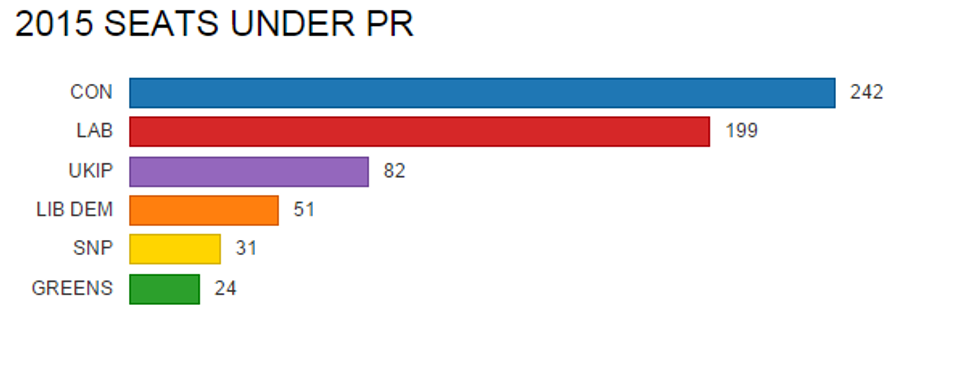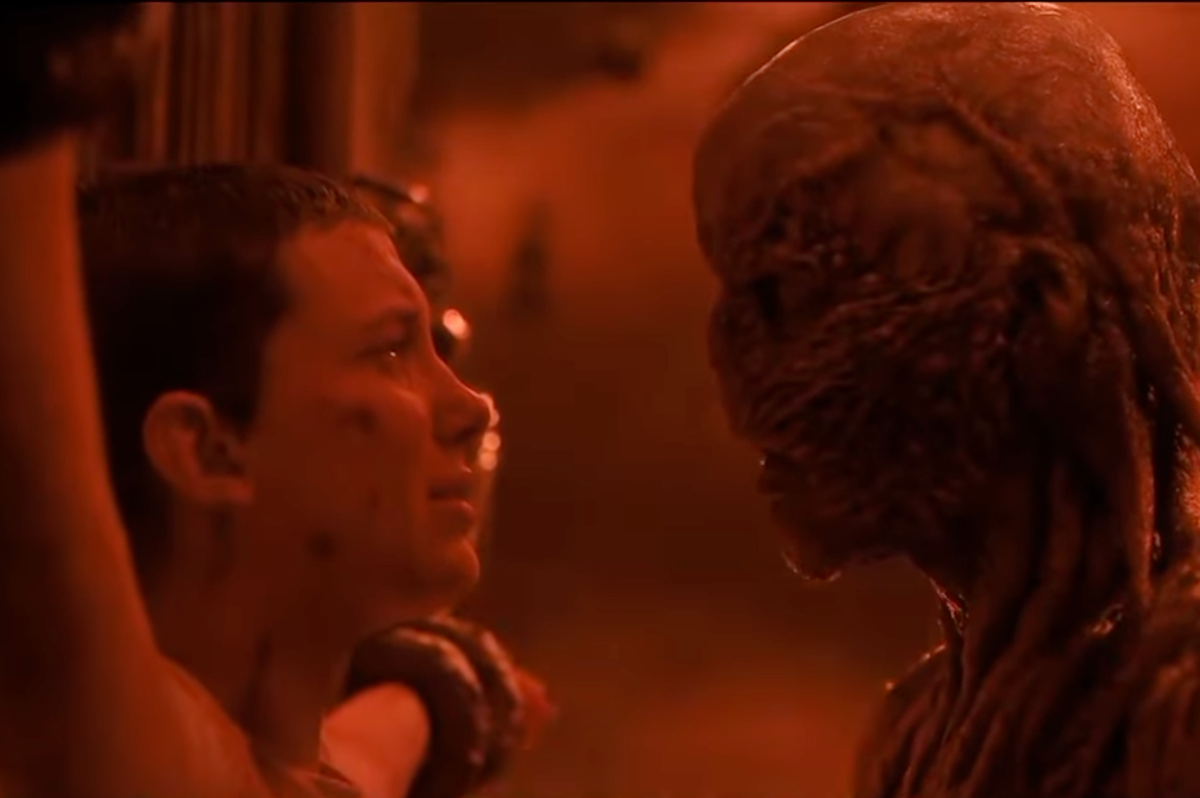News
Bethan McKernan (@mck_beth
May 08, 2015
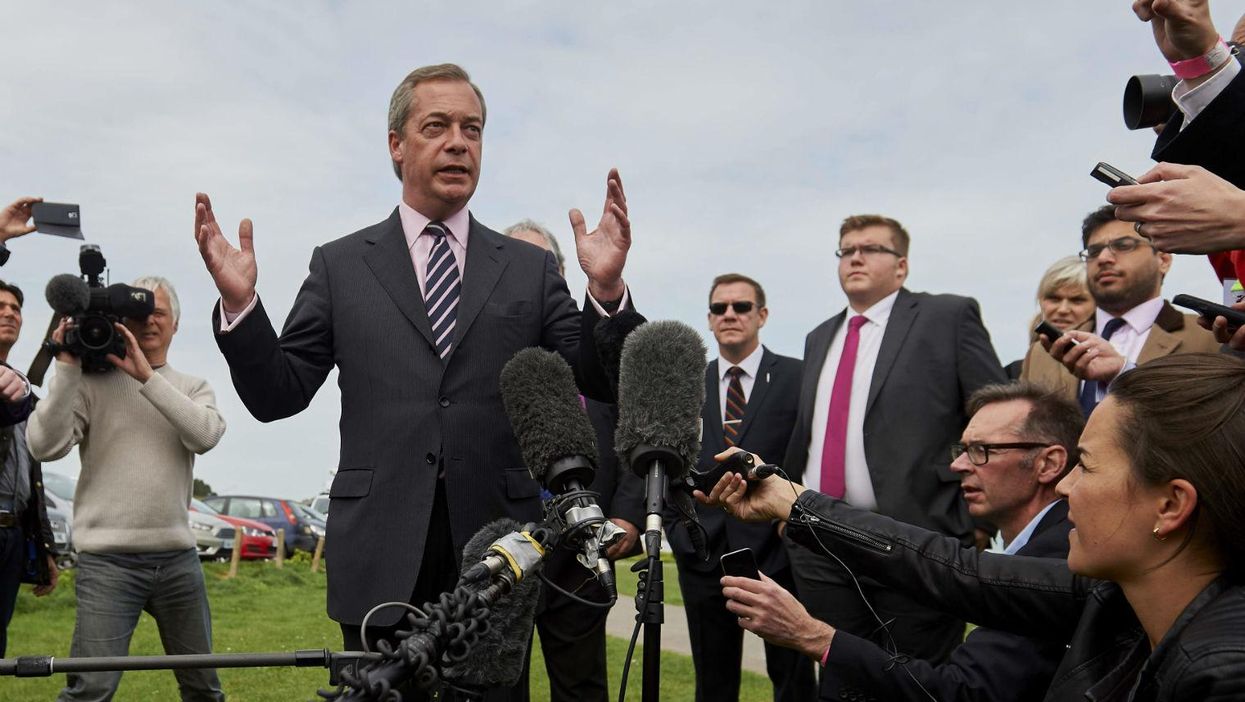
The Ukip, as well as the Green, share of seats in parliament would be much larger under PR
While there were major Conservative and SNP victories in the 2015 election, everyone else on the political spectrum was grumbling about the first-past-the-post voting system.
Ukip won 12.6 per cent of the vote and only managed to get one MP into parliament. By contrast, the SNP only got 4.7 per cent of the vote and returned 56 MPs.
So what would today’s new parliament look like if we had a proportionally representative system?
Based on the 629 seats won by the six biggest parties, the Tories would have lost 90 seats. While they would still be the biggest party in parliament, with only 240 MPs they would probably have been forced into another coalition.
Under a proportional voting system the SNP’s landslide of 56 seats would have been reduced to 31 and the Lib Dems would not have been wiped out, retaining 51 seats instead of eight.
Ukip would become the third biggest party in government with 82 seats and the Greens would have won 24 - a far cry from those parties' current tally of one seat each.
Electoral reform in favour of the Alternative Voting system was rejected by a national referendum back in 2011.
However, a poll conducted for the i paper just days before the election indicated that 61 per cent of people believe the voting system should be changed to better represent smaller parties in parliament.
More: The case for reforming our voting system, in three charts
More: 11 ways to make the next general election more democratic
Top 100
The Conversation (0)
